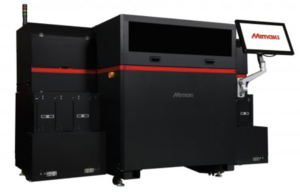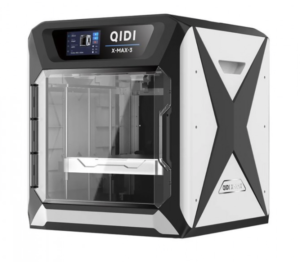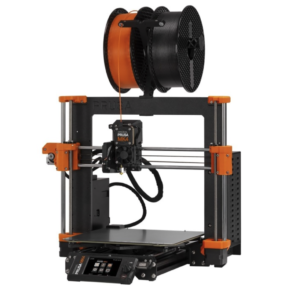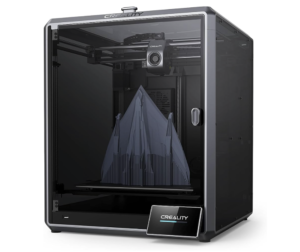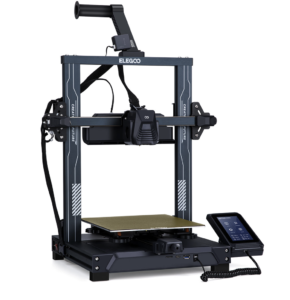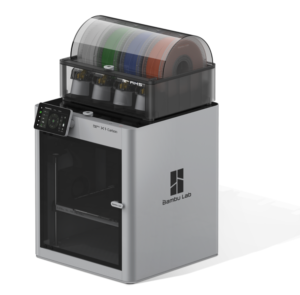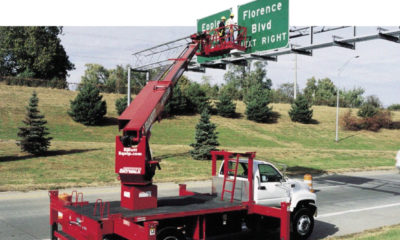BY NOW, EVERYONE HAS some familiarity with 3D printers. You may have seen people creating jewelry, cosplay (costume play — think Iron Man or The Mandalorian armor) costumes, and there’s also a good chance your dentist uses them to model dentures. Sounds like pie in the sky stuff, but do they have any practicality for signmaking? When we first wrote about 3D printers four or five years ago, usage was somewhat limited due to the machine costs or the durability of the limited printing materials. Now, in 2024, 3D printing is really stunning and may have a place in your shop.
So, what do you look for in a 3D printer? While currently available printers can print in metal or UV-cured resins, the real sweet spot lies with printers that use reels of filaments, known as FDM (fused deposition modeling). They use a variety of materials to create objects, providing a huge boon. The most common material is biodegradable and easy-to-print PLA (polylactic acid), but it has a downside in its brittleness and susceptibility to breaking under stress or impact. Even worse, PLA will soften at temperatures as low as 130°F, which makes it impossible to use in hot outdoor environments.
 3D printers can produce extremely fine dimensional details, such as the veggies on this sign.
3D printers can produce extremely fine dimensional details, such as the veggies on this sign.
Luckily a ton of different materials can withstand temperatures from 160° to over 200°F. ABS (acrylonitrile butadiene styrene), a common material, offers a wide range of colors, and the similar ASA (acrylonitrile styrene acrylate) has excellent UV resistance. It emits lower VOCs while printing and costs about 67% more than ABS ($40/kg vs $24/kg). If you need structural parts, a number of filaments can cover those needs, including polycarbonates and nylons for jobs needing extreme durability. In short, if you need to print elements or hardware that will encounter stress or extreme weather conditions, you can find a material that will work.
Advertisement
Bear in mind that not all printers can print everything and this needs to figure into the buying process. ABS, nylon and polycarbonate need a high temperature nozzle in the 290-300°C range and a bed that can be heated to 90-100°C. In addition, the print area needs to be enclosed in order to maintain a constant temperature. Most of the open-frame, lower-cost printers may not be able to reach these temperatures and will not have an enclosure. You can, however, find third-party or OEM enclosure add-ons if the printer meets the nozzle and bed-temperature specs you need. Look to spend at a minimum of $500 up to $2,000 for a properly equipped printer.
Consider also the maximum printing size. In the past, you were lucky if you could print eight inches cubed — 2 x 2 x 2 in. Now you can easily find plus- and max-size printers that can print up to 16 cu. in. Some printers in development even hope to offer sizes up to a cubic meter. As with everything, the bigger you go the more bucks you will spend.
You may be enthusiastic about 3D printing but unsure of how to obtain or make objects to print. Nowadays online libraries offer literally millions of models, a majority of which are free and those that charge want just a small fee. Thingiverse, Printables and Cults3D are just a few of the sites that you can check out to see if one meets your needs. In-house CAD/CAM designers can cover you as well.
A good 3D printer can provide you with the means to produce dimensional letters, frames, brackets, A-frame hinges and handles, and virtually any kind of dimensional ornament that you could possibly need. Many models even have the option to print in multiple colors. It is an exciting technology that has matured enough to warrant a place in the signshop.
PHOTO GALLERY (6 IMAGES)
Advertisement


 Tip Sheet2 weeks ago
Tip Sheet2 weeks ago
 Photo Gallery4 days ago
Photo Gallery4 days ago
 Ask Signs of the Times6 days ago
Ask Signs of the Times6 days ago
 Real Deal2 weeks ago
Real Deal2 weeks ago
 Paula Fargo1 day ago
Paula Fargo1 day ago
 Benchmarks1 week ago
Benchmarks1 week ago
 Photo Gallery1 day ago
Photo Gallery1 day ago
 Women in Signs2 weeks ago
Women in Signs2 weeks ago
 3D printers can produce extremely fine dimensional details, such as the veggies on this sign.
3D printers can produce extremely fine dimensional details, such as the veggies on this sign. 